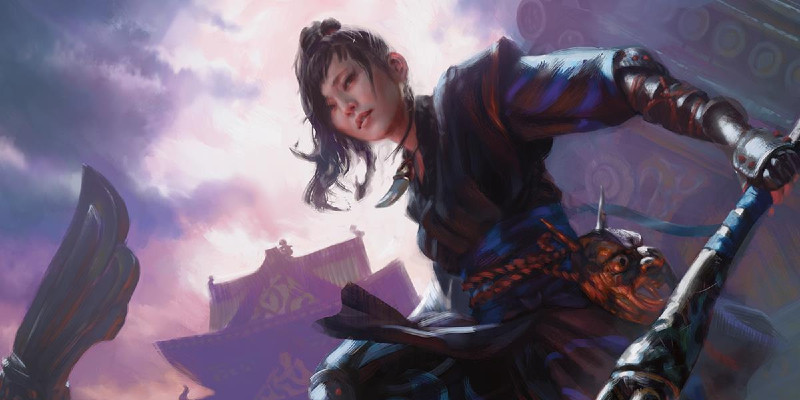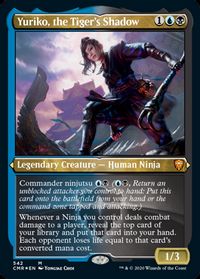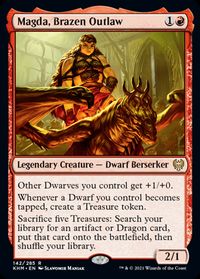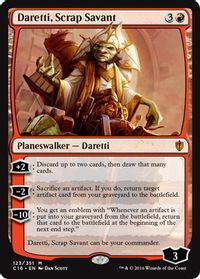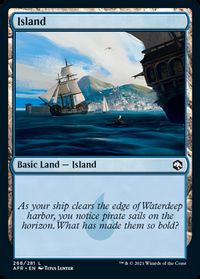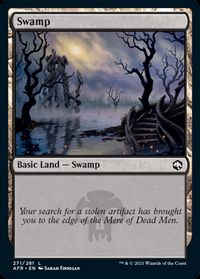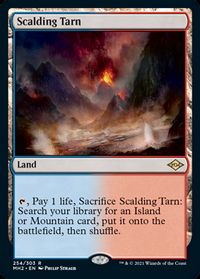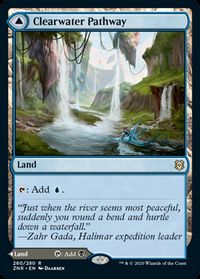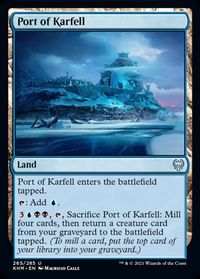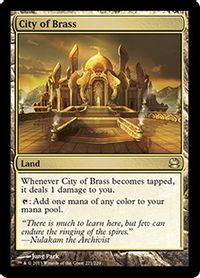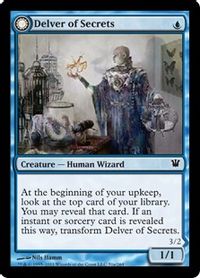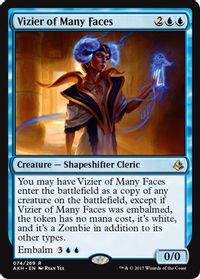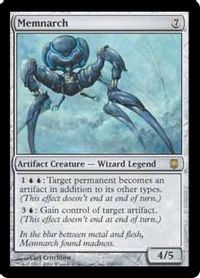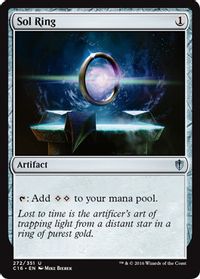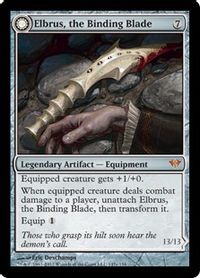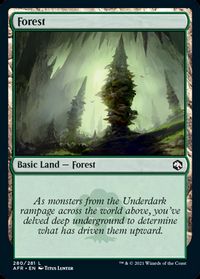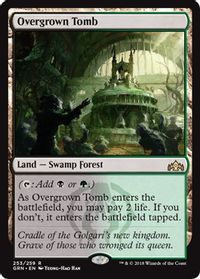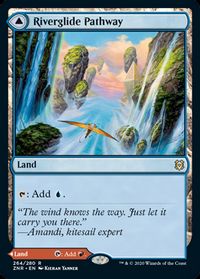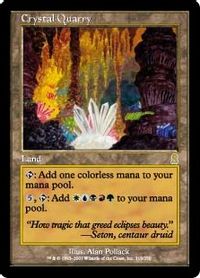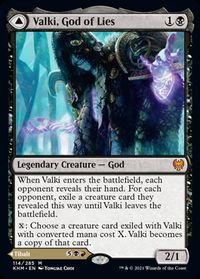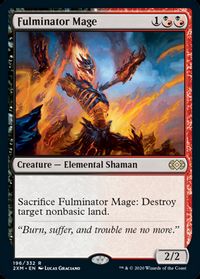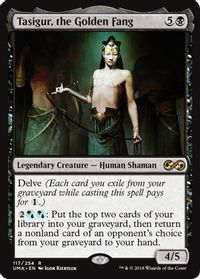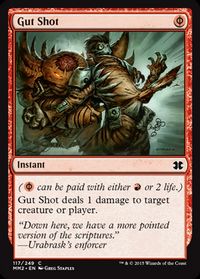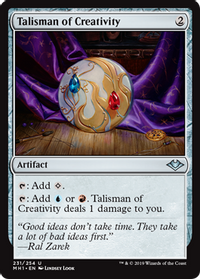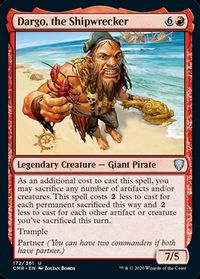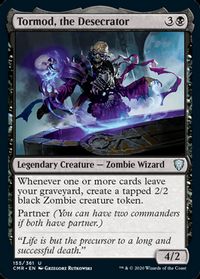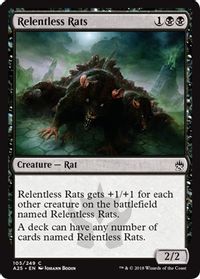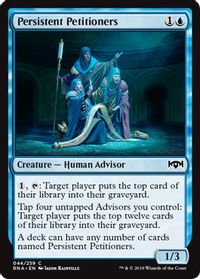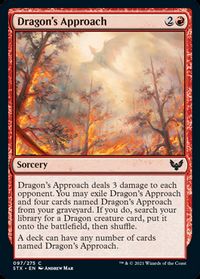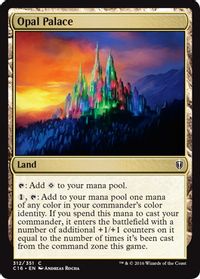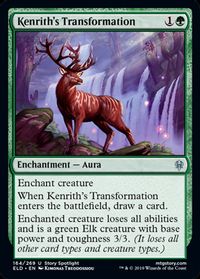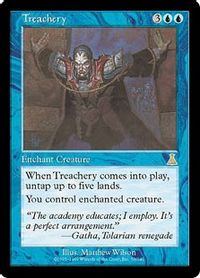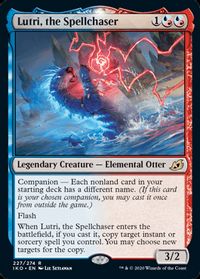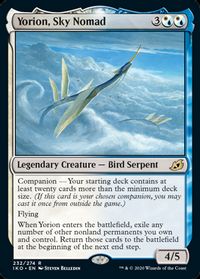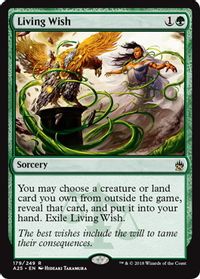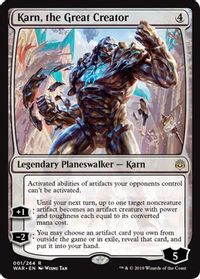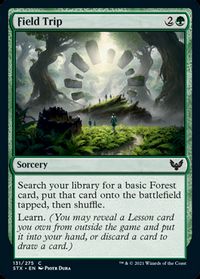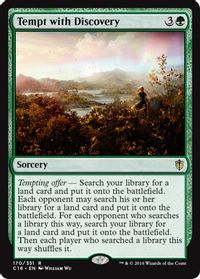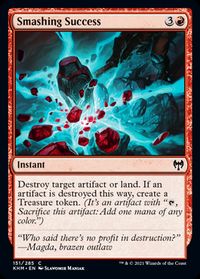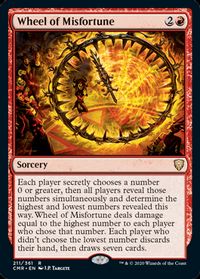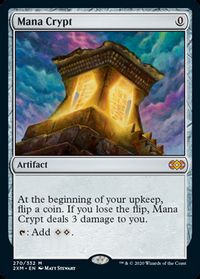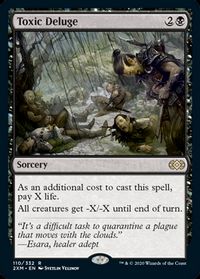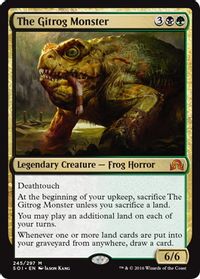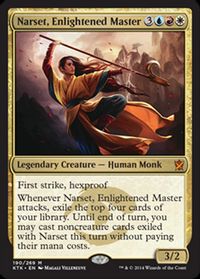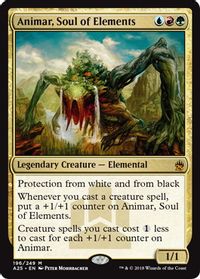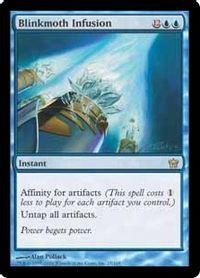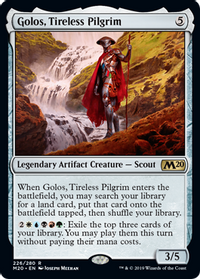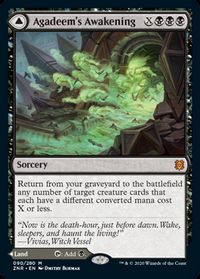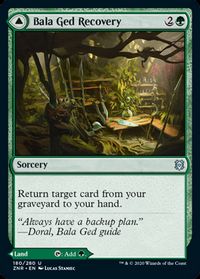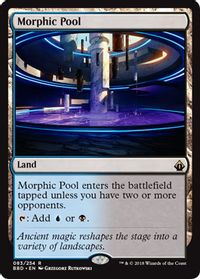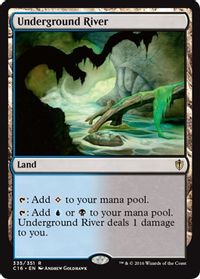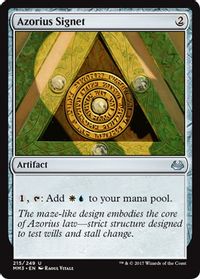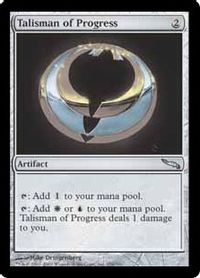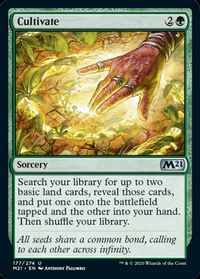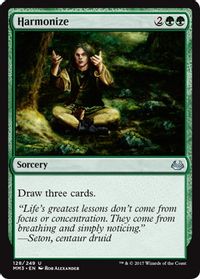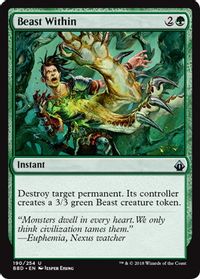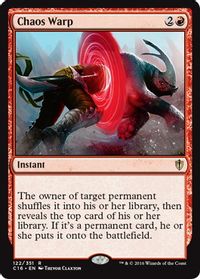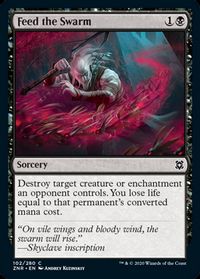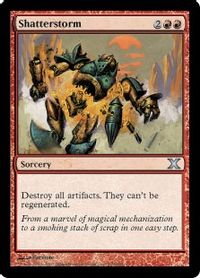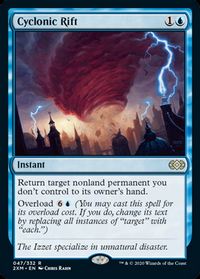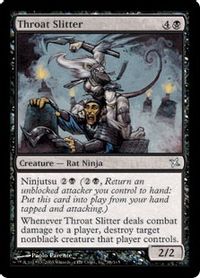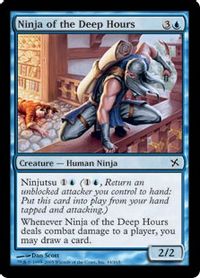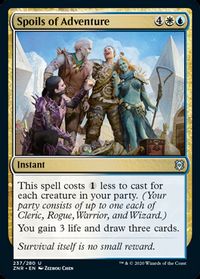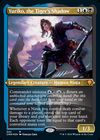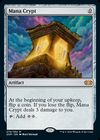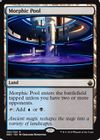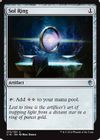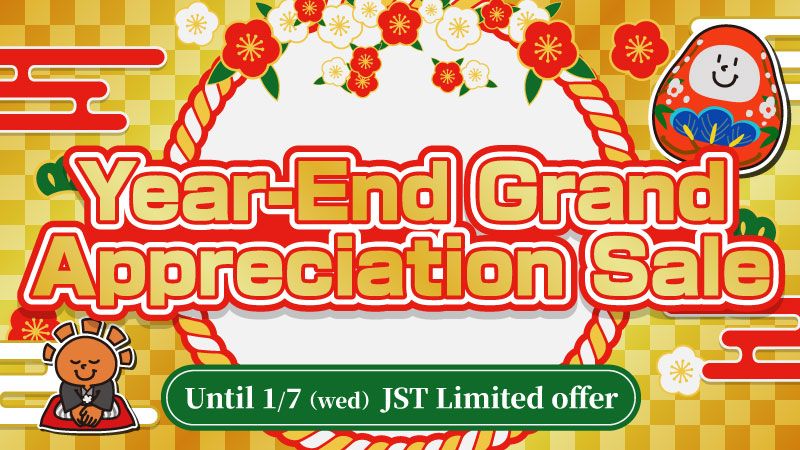Introduction
At this point, if you are a Magic player, it is impossible for you to never heard about the commander. I’ve been listening to my friends that own LGSs that commander players have been their biggest source of income for a while now, but it wasn’t until WotC really started pushing commander products and events that I realized how big it had become.
In this article, I will talk about the essentials of what you need to know to go from 0 to commander. This includes:
I will use 《Yuriko, the Tiger’s Shadow》 as an example many times since she is my deck’s commander, but try to make the guide as general as I can so that you can use it for every commander you want (especially since 《Yuriko, the Tiger’s Shadow》’s deckbuilding is differed a lot from the majority due to her commander ninjutsu ability).
Commander Rules
First, let’s go over the rules. If you are already used to magic, most of it will come naturally.
Commander is a multiplayer game that is played with 3 to 5 players with 4 being the optimal number. If you have 6 players you can still all battle in the same table, but at that point, it is recommended to split into 2 tables of 3.
Rule #1
Players choose a Legendary Creature as the commander for their deck.
Rule #2
The cards in a deck may not have any colors in their color identity which are not in the color identity of the deck’s commander. A card’s color identity is its color plus the color of any mana symbols in the card’s rules text. A card’s color identity is established before the game begins, and cannot be changed by game effects. Here are a few examples:
Color Identity
| Card | Color Identity |
|---|---|
| 《Island》 | Blue |
| 《Sacred Foundry》 | White-Red |
| 《Raugrin Triome》 | White-Blue-Red |
| 《Gates of Istfell》 | White-Blue |
| 《Arid Mesa》 | Colorless |
| 《City of Brass》 | Colorless |
| 《Endbringer》 | Colorless |
| 《Vizier of Many Faces》 | Blue |
| 《Torbran, Thane of Red Fell》 | Red |
| 《Civilized Scholar》 | Blue-Red |
| 《Kitchen Finks》 | White-Green |
| 《Tasigur, the Golden Fang》 | Blue-Black-Green |
| 《Esika, God of the Tree》 | 5 Color |
| 《Kenrith, the Returned King》 | 5 Color |
| 《Golos, Tireless Pilgrim》 | 5 Color |
| 《Dismember》 | Black |
| 《Sol Ring》 | Colorless |
| 《Elbrus, the Binding Blade》 | Black |
For example in my 《Yuriko, the Tiger’s Shadow》:
OK
Not OK
Rule #3
A Commander deck must contain exactly 100 cards, including the commander (99+1 or 98+2 if your commanders have Partner).
Rule #4
It is a singleton format. This means that with the exception of basic lands, you can’t have two cards in the deck that has the same name. Some cards (e.g. 《Relentless Rats》) may have rules text that overrides this restriction.
Rule #5
Commanders begin the game in the Command Zone. While a commander is in the command zone, it may be cast, subject to the normal timing restrictions for casting creatures.
Rule #6
If the commander goes into the graveyard, exile, hand, or library, its owner may choose to put it back in the command zone. Its owner must pay 2 for each time it was previously cast from the command zone. This is an additional cost (usually referred to as commander tax).
Rule #7
If a player has been dealt 21 points of combat damage by a particular Commander during the game, that player loses a game.
Rule #8
Being a commander is not a characteristic it is a property of the card and tied directly to the physical card. The card retains its commander-ness through any status changes, and is still a commander even when controlled by another player.
Rule #9
Companions are ok and work as your 101st card, as longs as you follow the deckbuilding restrictions (《Lutri, the Spellchaser》 is banned and since the deck size is fixed to 100, you can’t build around 《Yorion, Sky Nomad》).
Rule #10
Cards such as 《Living Wish》, 《Karn, the Great Creator》 and Lesson/Learn do not function in Commander (unless your group decides against!).
Then it is pretty much regular magic, with the following tweaks:
Last player standing wins!
Commander Philosophy
Story Time
My office is located at a co work space and one day I saw 2 guys from another office playing what appeared to be from far away from a card game on the common area during the happy hour on Thursday (yeah, we have that every Thursday 😊).
I rushed to the table and almost screamed with joy when I realized that they were in fact playing Magic: The Gathering. I introduced myself and asked what format they were playing. In a somehow sad tone they replied “Commander, do you know what it is? We could really use a third!”
I went home and did some quick research about it. Ordered a 《Yuriko, the Tiger’s Shadow》, jammed 99 cards I owned and next week was ready to battle. The deck was very poorly built but luckily so was theirs and the games ended up being lots of fun. The most fun I’ve had playing magic in a while, actually. It felt more like a mix of a board game combined with Among Us but played with magic rules. We played for 2 weeks and then covid hit and we have been working from home ever since.
Meanwhile, something like 3 months ago I found out that a group of players from my town has been using a program called SpellTable to play with each other and I asked if I could join. The first question I got asked was
“What’s your deck’s power level?”
“What do you mean? It’s 《Yuriko, the Tiger’s Shadow》.”
“Yeah, but what’s the power level?”
“What?!?!”
This is what is called Rule Zero. Rule Zero is a commonly used nickname for a fundamental philosophy of Commander, which can be summed up as “Don’t play games that you don’t want to.”
Commander is supposed to be fun and casual. It’s a socially interactive, multiplayer format full of wild interactions and epic plays, specifically designed as an alternative to tournament Magic.
A successful commander game is a game that ends with everybody feeling like they had a good time, despite who was actually the winner. It is not uncommon to make suboptimal plays just for the LOLs or to for example help someone that is having mana problems.
The game relies on a social contract in which each player is considerate of the experiences of everyone involved. At the end of the day as long as everybody had fun, it Is what really matters. Think more about it like a board game played with the rules of magic than an actual magic game.
Commander is designed to be a malleable format. Groups are encouraged to use the rules and the ban list as a baseline to optimize their own experience. This should be viewed as an encouragement for players to discuss their goals and how the rules might be adjusted to suit those goals.
It is a lot of fun to impose extra rules, such as Pre-constructed decks only with a 30€ extra budget; No Counterspells; No mana rocks; No sweepers. Imposing limitations encourage creativity and promote balance.
The format can still be broken, but games are more fun when it is not… unless everybody is ok with it. In that case, let it be broken!
A quick talk before each game is enough for everybody to be on the same page and to understand everybody’s expectations of the game. One question that is frequently asked is “What is the power level of your deck?”
Deck Power Level
The best way I’ve seen to describe a deck power level was on episode 295 of the command zone: How to Determine Your Deck’s Power Level I The Command Zone #295
They broke the power level into 5 categories on a scale from 1 to 10.
Jank (1-2)
These decks are basically the lowest level of a commander deck. Nothing makes much sense. It is just an agglomeration of 100 cards put together without any thought behind it. Actually, sometimes there is thought put behind it, but it is not related to the game play. All pictures with glasses; All miscuts. Lord of the rings theme etc.
Casual (3-4)
Early pre-constructed level. Low interaction, low Sinergy. It is usually a deck that you would first build if you casually go to the cards you own without doing any research about it.
Focused (5-6)
Nowadays Pre constructed level. Decks start to have more interaction. Decent mana curves and mana base with some thought behind it. Some redundancy on the cards in order to give some consistency to the game plan.
Optimized (7-8)
Efficient mana base (usually fetch in duals kinda stuff) and mana curve. These decks develop strong early board states. More tutors in order to add consistency. High interaction and synergy.
A very thin line between those decks and competitive (9-10). Most of the time 7-8 decks are fully powered weaker strategies or good strategies that intentionally stopped themselves from extra redundancy or power just to keep the social contract.
Competitive (9-10) (also known as Competitive EDH or CEDH)
The best strategies with the best cards. No social contract. If you are in a table with 9-10 decks you should know what you signed for. Everybody will try to beat each other the fastest and the dirtiest way possible.
These decks are laser-focused. Perfect mana bases with lots of fast mana such as the legal moxes, mana vaults and mana crypts, etc. Close to no table politics. If you sign up for a tournament, these are the kind of decks you should be expecting.
If you allow me to make the analogy:
Determining a deck’s power level is more an art than a science. Ultimately the goal is just to not have a clear outsider. Either a 3-4 deck in a 7-8 group or a 9-10 in a 5-6 group. Those games tend to not be fun for anyone. You are usually fine if everybody is in the same 3 to 4 adjacent power level. The table game play and table politics will self-police the game and adjust the table’s power level.
Deckbuilding Template
Before building your first deck try to know your play group. As I said before this is probably the most important part of the deck building process. You really want your deck’s power level to be adequate for your playing group.
If you don’t know your play group (new store or magicfest etc) I recommend you to use the 75% philosophy. This means that your deck should be 75% of what you think will be the ideal deck. Most of the time something between a 7 or 8 in terms of power level.
Two Ways to Build
You can build your commander deck from Top-Down or Bottom-Up.
Top-Down
Top-Down means that you first pick your commander and then you select the cards that support that commander. This also means that usually, you have a Commander-Centric deck, as it will be your main path to victory.
My 《Yuriko, the Tiger’s Shadow》 is a great example of that. I knew I wanted her as my commander, then filled the deck with lots of underwhelming 1 mana evasive 1/1’s just to support her. I even play cards 《Blinkmoth Infusion》 that does NOTHING in my deck just to reveal it for her trigger.
Bottom-Up
In contrast, you can use the Bottom-Up technique, which means that you first select your strategy and build the basis of the deck and only after picking the leader for your deck. This will usually end up with you having a Commander-Supported where many other cards play the same role as your commander like a 《Kess, Dissident Mage》 in a Grixis Control deck, or even a Commander-Agnostic deck where the path to victory does not depend on your commander at all and despite having access to it, your commander does not play a major role in the strategy and it is often used just as a little bonus to the color identity you want to use such as 《Golos, Tireless Pilgrim》 in a Storm deck.
Template
Nowadays a great starting point uses the following template:
35-38 Lands
Lands are crucial to every strategy. Make sure you play enough of them. Double-Faced Cards are a great way to make sure that you have enough lands while giving you something else to do when you don’t need the extra mana.
Also, try to give some thought to the color ratios. One mistake I spotted on most of the 《Yuriko, the Tiger’s Shadow》 lists I saw was that most players ignored the fact that you really want untapped blue on turn 1 for the one drop and untapped UB on turn 2 to use 《Yuriko, the Tiger’s Shadow》’s Ninjutsu.
+10 Ramp
Most of the time the first few turns are spent developing a board state that will allow you to play big spells in the later turns… You don’t want to be caught off guard and fall behind on this where everybody has 5 or 6 mana and you are still only with 3. You can use either 《Rampant Growth》 effects or mana dorks but mana rocks such as Signets and Talismans are among the most popular ways to do it.
10 Card Advantage
Everybody is usually super grindy, so you want ways to fight it. The idea with this category is to make sure you have enough resources to give a good fight in the later turns of the game.
Remember that Card Draw is not always a card advantage. A 《Careful Study》 nets you -1 card if the goal is not put something in the graveyard. And a 《Cultivate》 nets you +1 card while providing you ramp. With all this being said, the ideal cards for this role are cards like 《Harmonize》, 《Phyrexian Arena》 or 《Dig Through Time》.
10 to 12 Removal
This should include not only creatures but all the other types of permanents. In commander these cards are usually more important than in regular constructed formats, so keep that in mind. If you are playing blue, it is ok to consider counterspell effects in this category.
3-4 Board Wipes
Again, not only for creatures. It is fine to consider 《Shatterstorm》 as a board wipe. Sometimes you start getting really behind and the only option is to press the reset button.
30 Sinergy
This is the core of your deck. Ideally, synergy cards will mash-up with the other categories. For example in my 《Yuriko, the Tiger’s Shadow》 deck, 《Throat Slitter》 is both a synergy card and a Removal Card. The same goes for 《Ninja of the Deep Hours》 that also feels the role of Card advantage.
1 《Sol Ring》
Lol, yeah everybody has one.
This template is meant to be only a guide for new players. This should not be rigid at all. Most of the new to commander competitive players will instinctively tweak the numbers of this according to the chosen strategy.
When you build your first commander do not have that many expectations for your first few games. Just like when you brew a new constructed deck, you are destined to fail the great majority of the time and only time and games will make you tweak your deck in a way that you will be happy with how it plays. Just have fun during this process and enjoy the ride!
Use EDHREC to Get Ideas for Your Deck!
This is probably the best piece of advice I can give you regarding deckbuilding. This website compiles the majority of commander decks online and gives you plenty of ideas for your commander or strategy. It is easy to not remember or know many cards that would be a great fit for your deck.
Before we move to the final part of this article let me just give you some small tips regarding deckbuilding:
Table Politics
Lastly, let’s talk about table politics.
In commander, the way you socialize during the game has a crucial part in your win rate. Just like building a good deck or playing the cards in the correct order, the way you behave on the table directly affects the game. Having the ability to interact socially while forming alliances is a very important part of the game and the fun.
What is acceptable and not depends a lot on your playing group. It is also one of the reasons why Rule Zero is so important. While politics are a fundamental part of the multiplayer experience, they can certainly get out of hand and start bogging down the game.
A good rule of thumb is that general strategizing is fine but specific plans are impolite. And while short-term alliances are perfectly acceptable (“Don’t attack me next turn and I’ll finish him off”) longer alliances are not so much (“No attacking each other until everyone else is dead”).
Remember that each game is a different game, and only a game. Don’t let previous games affect the new game and let alone personal issues.
Don’t do things that will break the balance of the game, such as teaming up with someone from turn 1 until everybody is dead.
With all this being said, the most important part is to have fun. Sometimes a good backstab is epic and will make everybody laugh (even the affected person).
Conclusion
That’s all I have for you, I hope you like it and this article ignites you to build your first commander deck. I am having a blast with it and I hope that you and your friends can feel the same.
If you have any questions please don’t be afraid to use the comment section down below. Don’t forget to follow me on Twitter for more Magic updates.
Goncalo out. Puff

Goncalo Pinto (Twitter)


